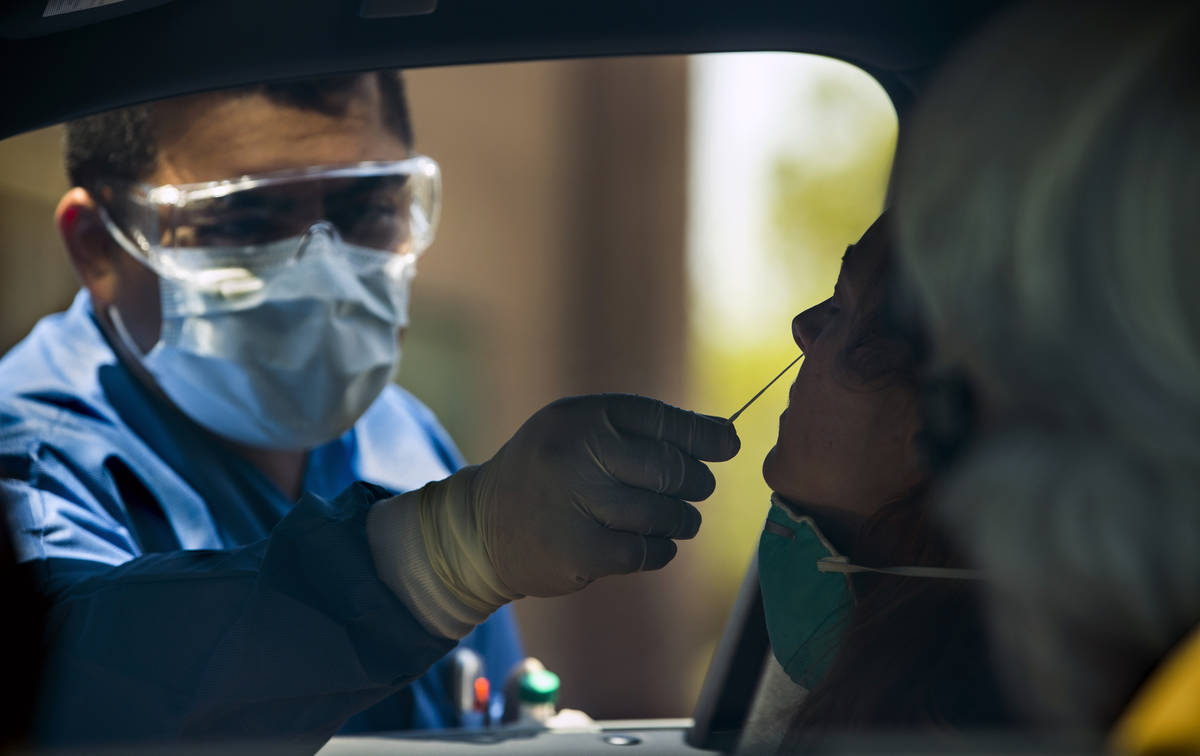Coronavirus transmission rate in Nevada is the highest in the US

A COVID-19 tracking website built by the co-founders of Instagram shows that Nevada currently has the highest rate of coronavirus transmission in the country.
The rt.live website calculates that each case of COVID-19 in Nevada is resulting in 1.56 new infections.
The finding comes as the state has been reporting record numbers of newly diagnosed cases, an indication that the virus is spreading quickly.
“I don’t think we can disagree that we’re seeing a lot of transmission in Nevada,” Brian Labus, a member of Gov. Steve Sisolak’s medical advisory team, said Tuesday.
The website is the work of Kevin Systrom and Mike Krieger, co-founders of Instagram, the photo- and video-sharing social networking service, and data scientist Tom Vladeck, owner of Gradient Metrics.
The data used is from The COVID Tracking Project, a respected data aggregator launched by The Atlantic magazine.
The model is based on government reports of diagnosed case counts and attempts to correct for increases in the volume of testing, which may inflate new case numbers in some instances.
If the rate of transmission is above 1, then “the virus will spread quickly,” according to the website. If the rate of transmission is below 1, “the virus will stop spreading.”
At a rate of transmission below 1 for the virus, “you get fewer cases in each generation (of infection), and it will burn itself out,” said Labus, an assistant professor in epidemiology and biostatistics at UNLV’s School of Public Health.
Sizable shift seen
The website shows that two months ago, Nevada’s transmission rate was just 0.77, but it has been rising since at least a month ago.
Across the country, 36 states currently have estimated transmission rates of 1 or higher.
For each state, the website gives its best estimate of the rate of transmission but also provides a range. For Nevada, that range is 1.24 to 1.86, broad enough that “statistically, we’re technically tied with a bunch of these other states,” Labus said.
Nevada is closely followed by Wyoming, Florida and Idaho in terms of highest estimated rates of transmission, and then by Hawaii, Montana, Oklahoma, Wisconsin, Arizona and Michigan.
By looking at case numbers for each state as a whole, the website doesn’t take into account differing levels of transmission in different areas, which may vary widely.
Reporting lags that inflated case counts over the weekend also could have affected Nevada’s ranking.
But Labus did not wish to quibble.
“It’s not a surprise that we’re on the bad end of things,” he said. “Whether we’re first or 10th, neither one of those is acceptable.”
A spokeswoman for the Southern Nevada Health District said the agency could not comment on the ranking because it was not familiar with the website’s data source and process.
Rise in cases among young
“However, we know that in our community, we are seeing continued transmission of disease and our case counts are rising, especially among younger individuals,” said spokeswoman Stephanie Bethel. “We remind everyone that we are still in this pandemic, and steps should be taken to prevent the spread of disease. If you have received a positive test result, you must self-quarantine at home.
“Everyone should still stay home if possible and wear face masks if they must go out, avoid mass gatherings and continue to social distance,” she said in an email. “These are steps people can take to prevent transmission of disease.”
Representatives of the Nevada governor’s office and the Nevada Department of Health and Human Services did not respond Tuesday to requests for comment.
Although younger people tend not to get as ill from the virus as do older people, Labus said he expects to see increases in hospitalizations and deaths in the coming weeks, including in the young.
“It’s not like any age group is immune from dying from this disease,” he said.
“Nevada’s data is trending in the wrong direction, and it’s important that we take the social distancing measures seriously and wear masks when we go out in public,” Labus said. “We don’t have a lot of other options before we have to think about closures, and we don’t want to do that, obviously.”
Contact Mary Hynes at mhynes@reviewjournal.com or 702-383-0336. Follow @MaryHynes1 on Twitter.